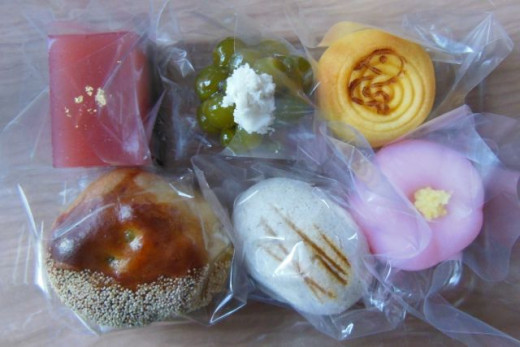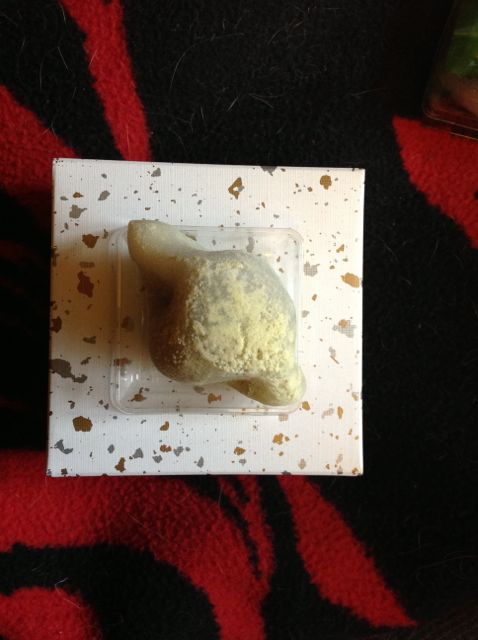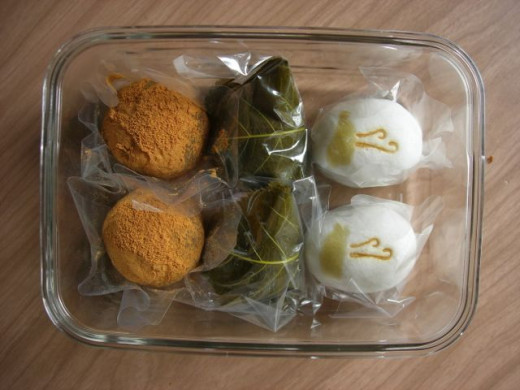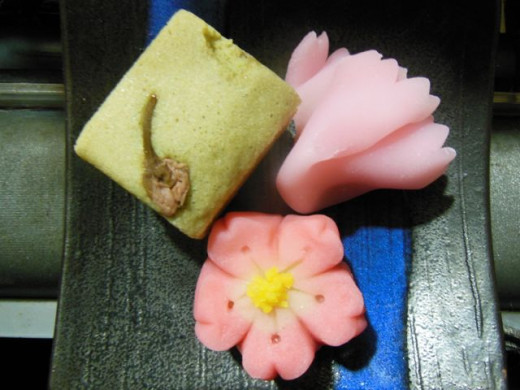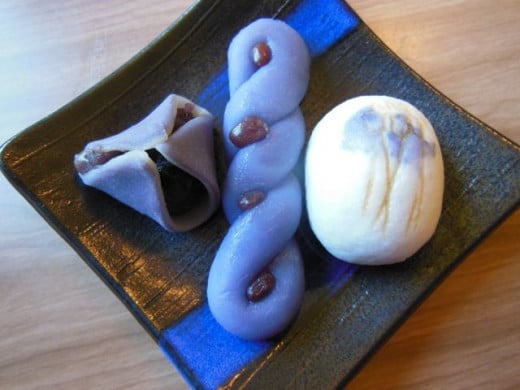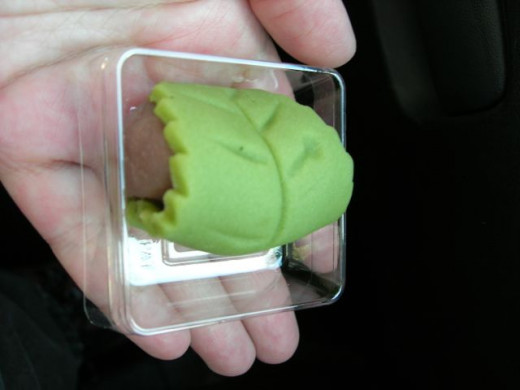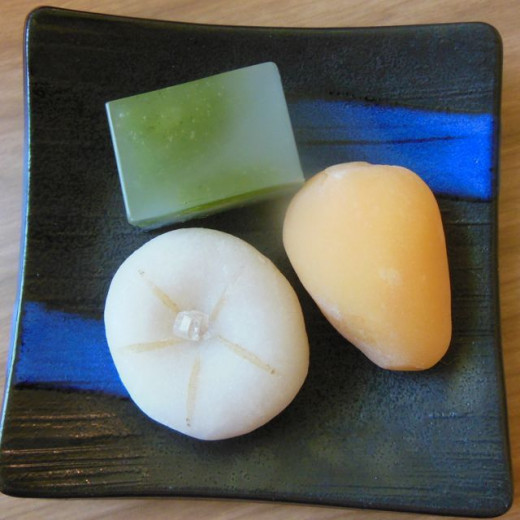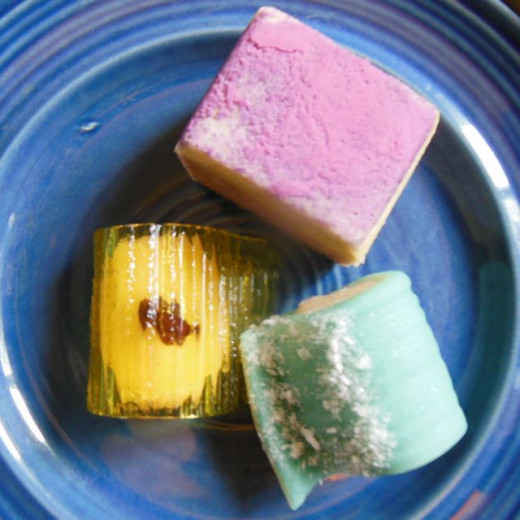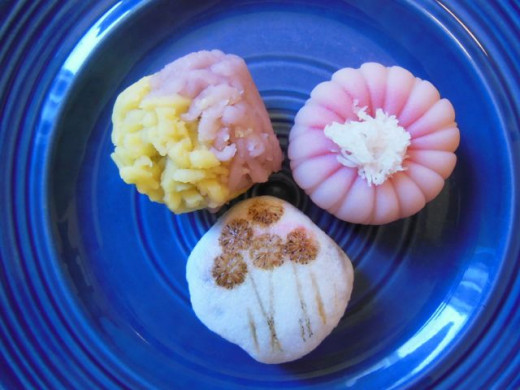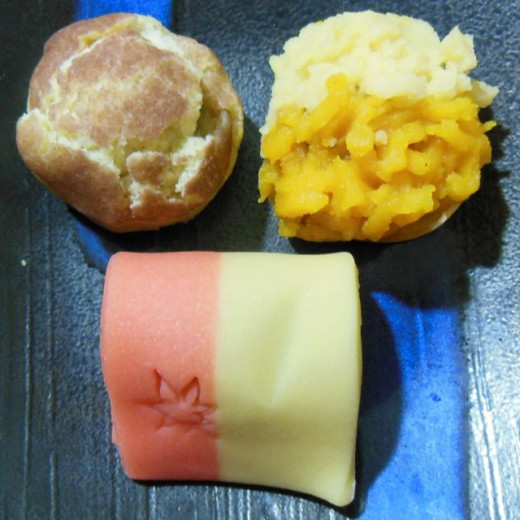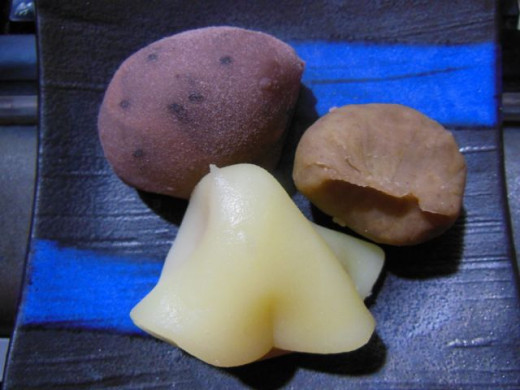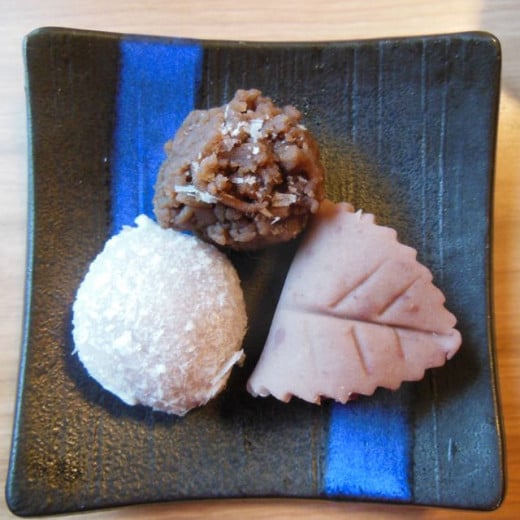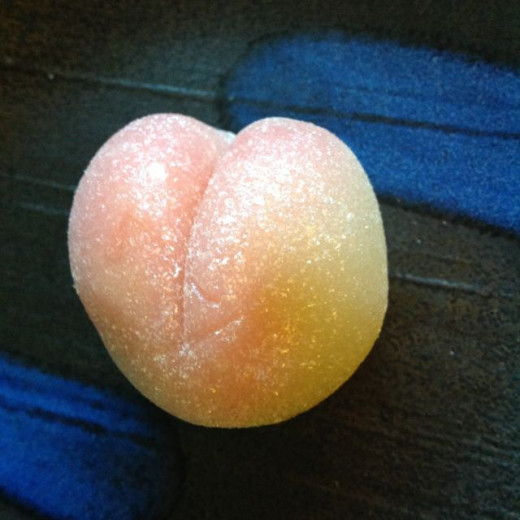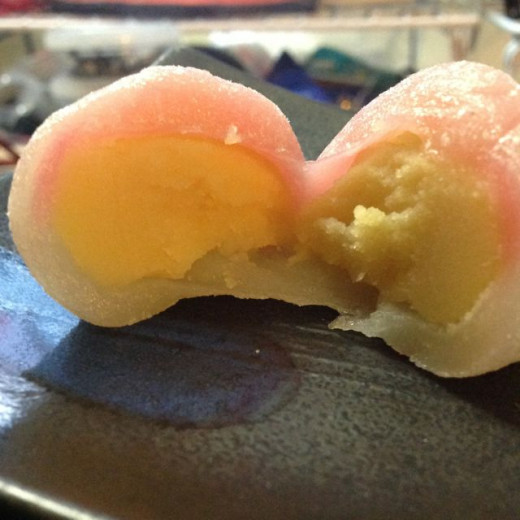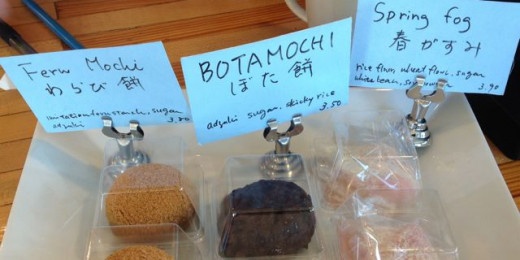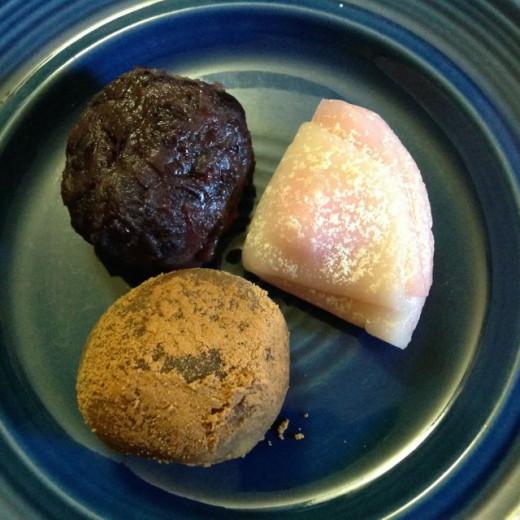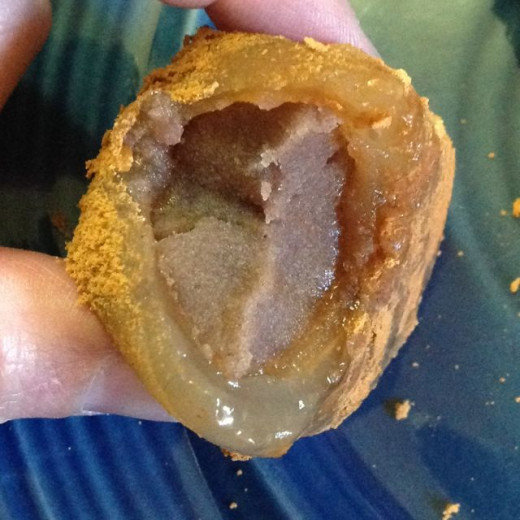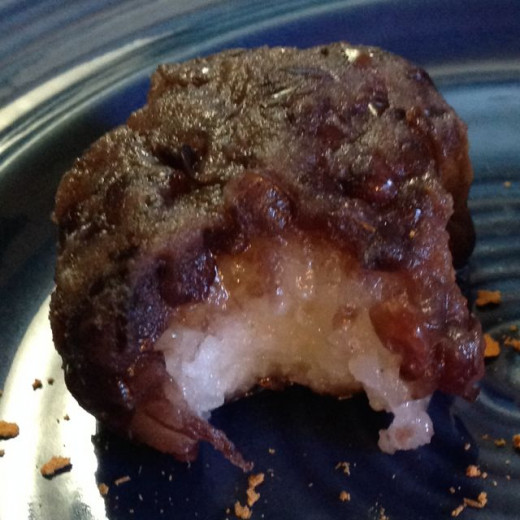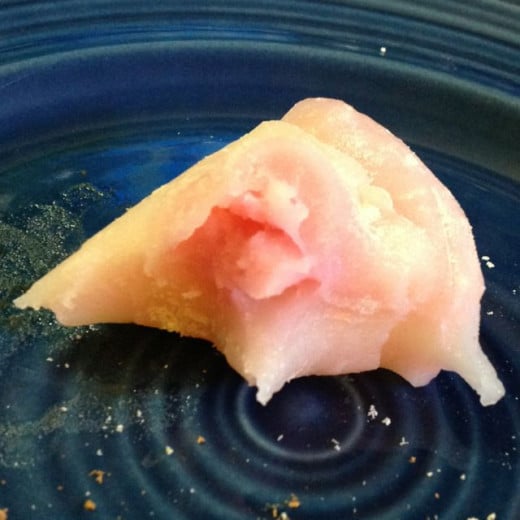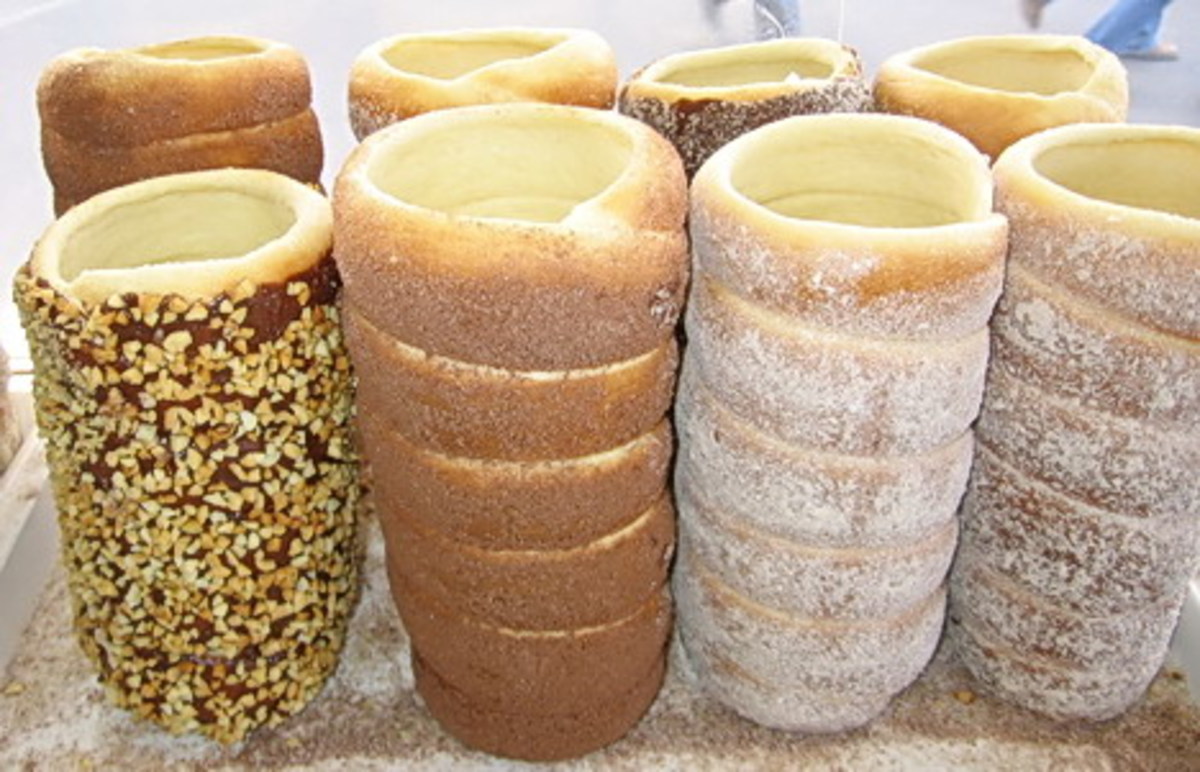Wagashi - Traditional Japanese Sweets
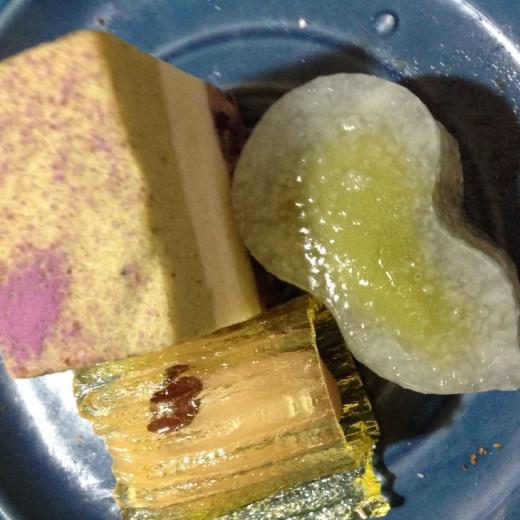
Seasonally celebrating the freshness of food and nature
Wagashi are traditional Japanese desserts, not quite cakes and not quite candies. They are made from rice flour and bean pastes, but some also contain things that might be more recognizable to Westerners such as eggs and sugar. The varieties change with and honor the seasons. The ingredients are supposed to be as fresh as the cook can get them, made and eaten in a very short amount of time. Most often, wagashi are part of the traditional tea ceremony and are eaten before you drink the ritual bowl of matcha tea. However there are also wagashi bakeries or stores that exist just to sell these delicious treats, and the love of wagashi has definitely spread beyond Japan.
I know this has now gone beyond an interest and become a passion because every time I travel, one of the first things I do is see if there's some place to get wagashi! The trio you see here are from Seattle confectionery Tokara, which produces traditional Japanese sweets.
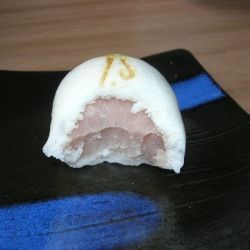
So, what's inside those things?
demystifying wagashi
What you see here is a delightful mochi, called "At A Mountain Road." (it's filed with Japanese yam) This is a traditional one, not a modern, Western one. Modern mochi are usually found at sushi restaurants or in the freezer section at the grocery store and are a steamed rice wrapper enclosing a ball of ice cream. With traditional mochi that are part of the world of wagashi, the insides are usually a sweetened bean paste and the outside might be wheat-based or rice. This is a sweet to the Japanese palate, but might not seem very sweet at all to a modern American tongue.
There's a photo gallery further down this lens on the Anatomy of Wagashi, where you can look at some of the outsides and insides of the different styles if you wish.
Seasonal Tastes - wagashi throughout the year
Click thumbnail to view full-size











Wagashi Assortments
Where you just are curious about taking a taste or if you need some wagashi fast, or if you don't think you are up to making your own, here are some samplers you can order. I strongly recommend that people taste and explore the different varieties before they take on the challenge of making their own.
See the World of Wagashi
Since wagashi are most often eaten for special occasions, many Japanese people don't make their own and instead buy them from specialty bakeries or manufacturers. Here is a look at large and small-scale wagashi making.
When you start to explore wagashi, it seems like the number of styles is endless. Actually it probably only numbers in the hundreds. As you eat them over the different seasons, you'll find that there are some traditional forms which come up again and again and others which are much more rare. Here are some of the types you will see in different colors and with different decorations to suit the time of year.
Mochi - these are little balls of bean paste wrapped in a covering of sticky rice dough. You may have had the Americanized version filled with ice cream at your local sushi restaurant for dessert.
Manju - these look a lot like mochi but they are a wheat dough wrapped around a filling of sweetened Japanese yam.
Yokan - these are small chunks of very firm jelly, made from agar agar (a seaweed).
Kinton - these artful balls are entirely made from bean paste with the outer layers being more brightly colored and pushed through a sieve to form tiny squiggles that get clumped around a regular bean paste filling.
Wagashi Recipes - ready to give it a try?
- Wagashi Maniac
This blog, in both English and German, is truly put together by a "wagashi maniac." Amazing pictures and recipes. - Wagashi - Cookbook - Kids Web Japan
If you go to a Japanese confectionery shop, you'll see row upon row of elaborately shaped and colored wagashi (Japanese sweets and cakes) that look like works of art. Deciding which ones to buy isn't easy. Japanese kids love these sweets just as much - Japanese Dessert Recipes, wagashi, ohagi, anko sweet bean paste
For fun, or to feed a large group, you might try making your own ohagi. - my wagashi chronicles
explorations of wagashi, with many recipes and photos
Broaden Your Wagashi Education - for cooks and serious afficianados

Anatomy of Wagashi - a closer look at the early spring confections
Click thumbnail to view full-size






Tell us about your favorite kinds of wagashi and by all means, let us know where you find the best ones!


